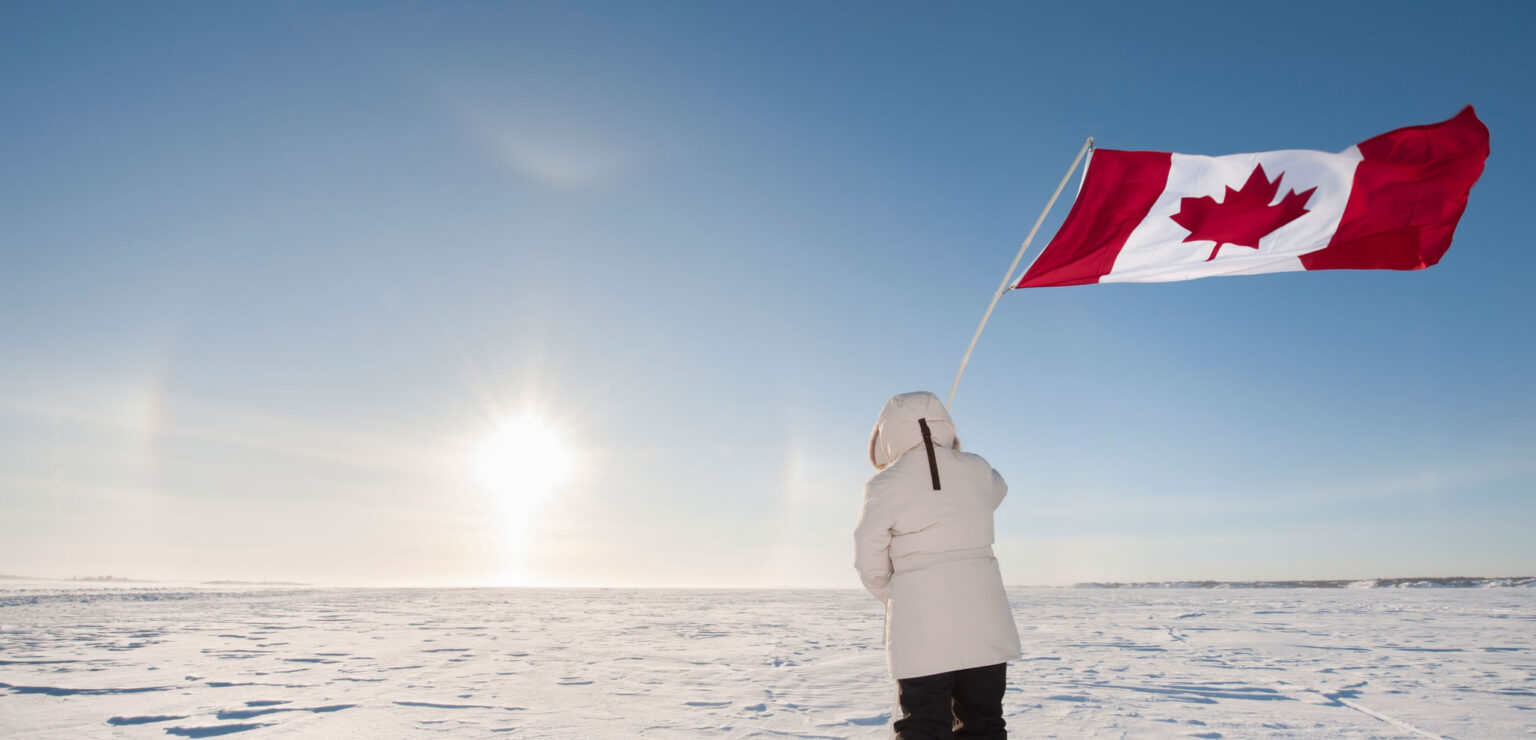A woman waves the Canadian and Northwest Territories flags near Yellowknife. The Canadian Armed Forces is building a new multipurpose facility in Yellowknife to increase its defense capabilities and forge deeper ties with surrounding Indigenous and Northern communities. AFP/GETTY IMAGES
THE WATCH STAFF
Canada will build a new multiuse facility in its Far North to enhance its ability to deploy forces and improve domain awareness. The Yellowknife defense facility and housing initiative also prioritizes the needs of neighboring Indigenous and local communities, giving the Canadian Armed Forces facility a dual military and civilian-use role that furthers the country’s goals of a united, secure Arctic region.
In April 2024, Defence Minister Bill Blair, Cabinet officials and regional elected officials broke ground on Yellowknife’s National Defence Multipurpose Facility. “Once completed, this facility will enhance the mobility, reach and footprint of the Canadian Armed Forces (CAF) in the North and improve our ability to deploy to the region for operations and exercises,” according to the Canadian Defence Review, an online news site dedicated to Canadian defense issues.
The $99 million, 9,200-square-meter facility will house the headquarters for the 1st Canadian Rangers Patrol Group. Other elements of Joint Task Force North (JTFN) will also be located at the Yellowknife base. The new base will have office, classroom and assembly space, which will also be used as a drill hall, as well as warehouse storage and vehicle maintenance bays, according to the news site. The new base will bring together currently dispersed components of the JTFN and the 1st Canadian Rangers Patrol Group in one secure compound, which will enhance collaboration. The base is slated to be ready by late 2026 or early 2027, the site reported.
“The construction of this new multi-purpose facility in Yellowknife will improve the Canadian Armed Forces’ ability to deploy to the Northwest Territories and is a significant step towards a more robust military presence in the region. Through this investment, and the measures in Our North, Strong and Free, we are prioritizing Arctic sovereignty to keep Canadians safe in a changing world,” Blair said, according to a Canadian government news release.
The Yellowknife base project comes in an era of increased defense spending in the Arctic. The newly released Canadian defense plan calls for $159 million over 20 years for Northern Operational Support Hubs that would increase domain awareness and defense capabilities in the far North while forging closer ties with Indigenous and Northern communities by investing in multiuse infrastructure that can benefit local people. “This new multipurpose building will bring together the Canadian Rangers and different elements of Joint Task Force North in a modern facility that meets their needs. This is good news for Canadian Armed Forces members deployed to Yellowknife, and for this entire territory. I welcome the beginning of construction on this facility, and I look forward to its completion,” said Michael McLeod, a Parliament member for the Northwest Territories.
The Arctic is front and center in Canadian defense planning as climate change melts formerly impenetrable ice sheets and opens shipping lanes for the first time, also potentially unlocking vast natural resources in the region. In addition to the new Arctic and Far Northern bases, Canada is upgrading its tactical helicopter fleet to respond to threats or emergencies in remote areas and bolstering its defense detection posture by purchasing sophisticated maritime sensors and investing in advanced early warning aircraft, according to its updated defense plan: Our North, Strong and Free.
Joint Task Force North is one of six CAF regional joint task forces situated in key areas across Canada. JTFN helps Canada maintain full awareness of security and defense conditions in the North, according to the Canadian Defence Review. The 1st Canadian Rangers Patrol Group has 2,000 rangers in 61 patrols in 65 Far Northern communities, according to the task force’s website.

